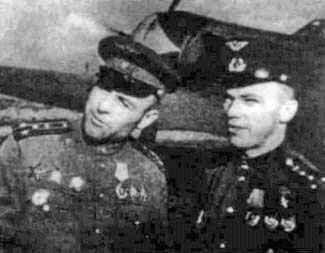 Image
from Lavochkin La-7 of Vestsik, MBI
Image
from Lavochkin La-7 of Vestsik, MBI
On this photo, we see the commander of 176 giap col. P.F. Chupikov (left) and his deputy, cap. Kozhedub (right) in August 1944.
The plane on the background has the typical red nose ending with triangular areas on the sides. The red triangle looks concave; difficult to say if it is for a choice of the painters, or for a banal unaccuracy in the masking phase.
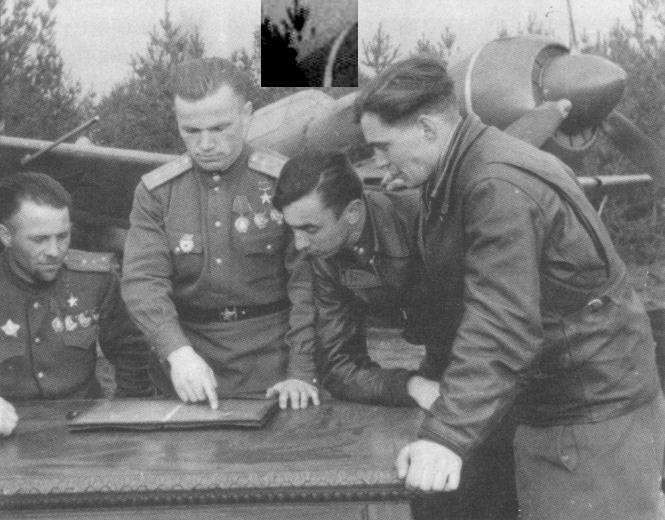
Ivan Kozhedub was the Soviet top ace; he arrived to this regiment in August 1944. He was already a famous ace from 240 iap, with a score of 45 kills, awarded as Hero of The Soviet union on 4 February 1944.
Kozhedub was awarded with the second HSU on August 19, 1944. On this photo he has still one HSU Gold Star, so it shoud be around or before August 19, 1944.
The plane on the background (not necessarily his '27') has a red spinner and front ring and red triangles, as standard for this unit; from the photo, it seems that there is not any white outline around the red triangle.
From photos, it seems that not all the planes of the units had white outlines (see the small detail). It is possible that plane 27 received the white outlines only in a second time.
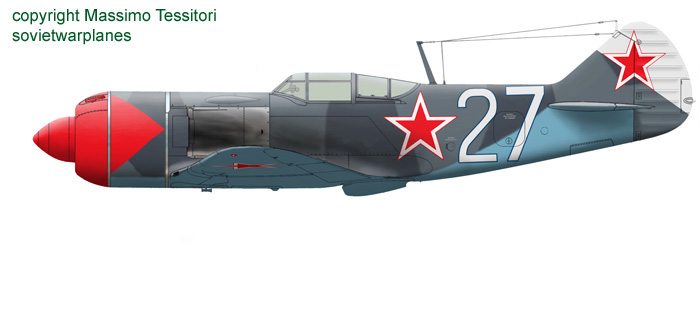
Here is plane 27, represented as it was probably painted some days after its arrival to 176 giap, with standard red nose and white triangle on the tail.
The blue outline around the number was a factory standard.
The serial of the plane (as now preserved in the Monino museum) is 45210127, typical of a plane built in Zavod 21. This looks a bit strange, because the font of the numbers and the big star on the fuselage seem more as typical of Z.381.
Perhaps the plane was subject to some repainting to uniform its look with other planes of the unit.
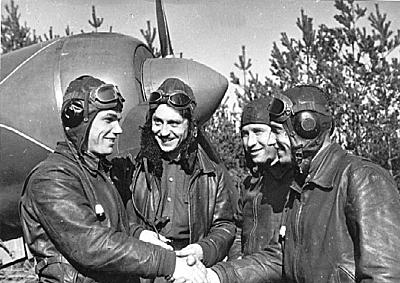

The photo shows a plane (not necessarily plane 27) with the red triangle on the nose outlined with white lines. Seems that the shutters behind the spinner were painted red too.
It's very likely that plane 27 received the white outlines during its operative service.
Kozhedub obtained his 62nd victory, his last claim during the WW2, over Berlin on 16 April 1945.
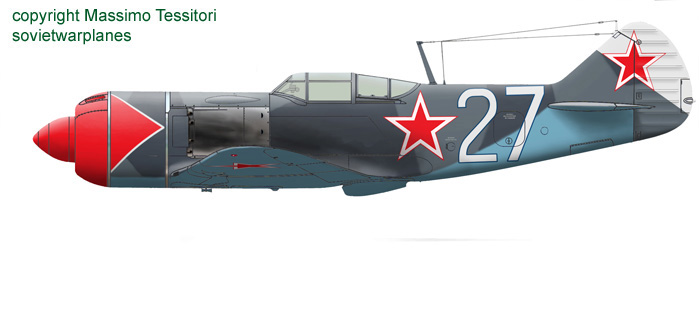
According to the memoirs of pilot S.M. Kramarenko, he flew Kozhedub's "White 27" while the Deputy Commander was in Moscow for the May Day celebrations until the end of the War, for about three weeks. Kramarenko referred that plane 27 carried no victory starlets nor medals or anything particular painted on the side during the war, and that they were painted later at the Frunze Academy.
A reconstruction of the plane of Kozhedub as it appeared between late 1944 and the end of the war, with white outlines on the red triangles on the nose, but without the victory starlets and the medals that were painted at the end of the war.
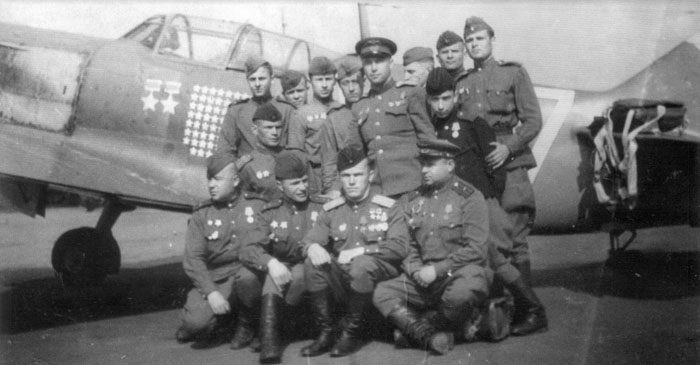
Some famous photos were published with the plane still operative after the return of Kozhedub to his unit and the war's end. They show two HSU medals and 62 victory starlets were painted on the the fuselage.
These photos don't show the nose of the plane, so we don't know if it was still red as during the war, or had already received the white spinner and the markings on the nose side that we see in later images.
Go to Kozhedub's 27 to know more on this plane and its story after the war's end.
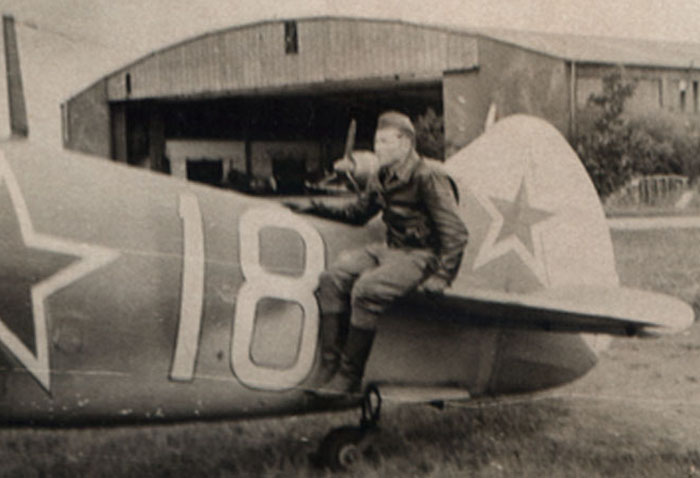
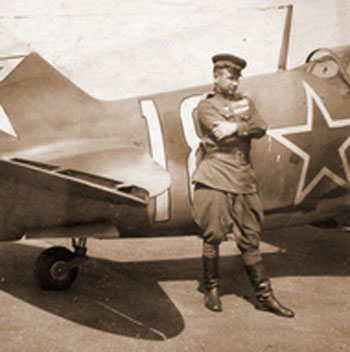
Two photos of A.S. Kumanichkin of 176 giap and his plane '18', that is supposed to be very similar to that of Kozhedub in its operative period.
The plane shows clearly the 2 greys standard camouflage and the white oblique cap on its tail. No doubt that it had red nose as Kozhedub's one.
Some profiles represent it with 36 victory starlets on the left side, more or less as the one of Kozhedub after the war's end.
The fonts of the numbers and the wide size of the stars suggest that the plane was built in Zavod 381. Strangely, the same characteristics appear on the plane of Kozhedub that is known to have been built in Z.21. Perhaps the unit had planes from both factories, and some repainting was made to make their look more uniform.
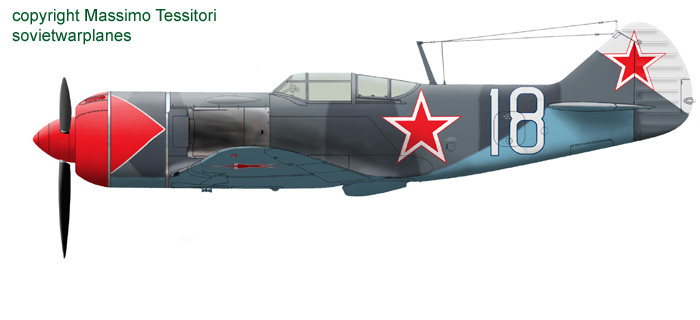
A profile of plane 18 of A.S. Kumanichkin.
The front of the plane, not visible on photos, was drawn as that of the plane of Kozhedub.
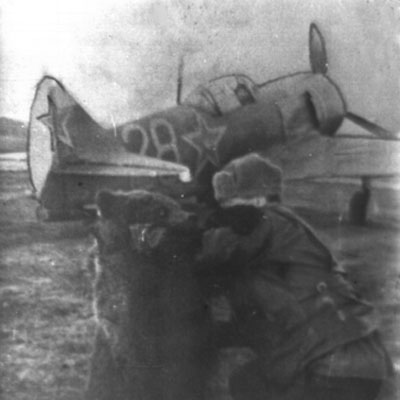
Surprising photo of pilot Nechaev with a baby bear.
On the background we see La-7 n.28 of 176 giap.
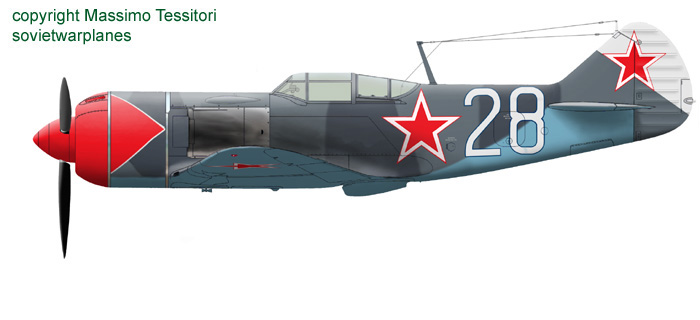
A profile of plane 28. All the details not visible on the photo were made as on the plane of Kozhedub.